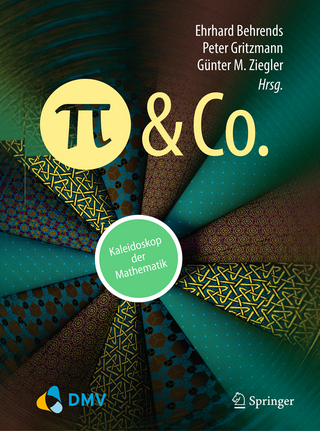
Collaborative Business Ecosystems and Virtual Enterprises
Springer-Verlag New York Inc.
978-1-4020-7020-4 (ISBN)
Technical co-sponsors. Committees and referees. Foreword - Towards collaborative business ecosystems.
Part 1: Reference models. 1. Reference Models for Virtual Enterprises; M. Tølle, et al. 2. Towards a Modeling Framework for Networks of SMEs; F. Biennier, et al. 3. Enterprise Engineering - The Basis for Successful Planning of E-Business; R. Jochem. 4. Handling the Complexity of IT-environments with Enterprise Architecture; T. Birkhölzer, J. Vaupel.
Part 2: VE Creation Models. 5. A Dynamic Model of Virtual Organizations: Formation and Development; C. Lackenby, H. Seddighi. 6. Initiation of a Globally Networked Project: a Case Study; K. Visuri, et al. 7. In Search of the Right Partner; S. Field, Y. Hoffner.
Part 3: Brokerage in Virtual Enterprises. 8. Brokerage Function in Agile/Virtual Enterprise Integration - A Literature Review; P. Ávila, et al. 9. A Framework for Broker Assisted Virtual Enterprises; C. Harbilas, et al. 10. Virtual Enterprise Broker: Processes, Methods and Tools; R. Mejía, A. Molina.
Part 4: Contract Management. 11. Managing Contracts in Virtual Project Supply Chains; H. Laurikkala, K. Tanskanen. 12. Managing Contractual Relationship in Virtual Organizations with Electronic Contracting; D. Burgwinkel. 13. Contract Management in Agile Manufacturing Systems; J. Barata, L.M. Camarinha-Matos.
Part 5: Negotiation and Contracting. 14. A Proposal on Negotiation Methodology in Virtual Enterprise; T.Kaihara, S. Fujii. 15. Negotiation Protocol Characterization and Mechanisms for Virtual Markets and Enterprises; Y. Hoffner, et al. 16. A Conceptual Framework for B2B Electronic Contracting; S. Angelov, P. Grefen.
Part 6: Workflow Management. 17. Towards a Cross-Organizational Workflow Model; K. Schulz, M.E. Orlowska. 18. Integrating a Workflow Engine anda Mof Repository to an Open Service Platform; C.R.M. Silva, et al. 19. Corvette: A Cooperative Workflow Development Experiment; K. Baïna, et al. 20. Inter-Organizational Workflow Management in Virtual Healthcare Enterprises; T. Amin, H.K. Pung.
Part 7: Knowledge Management. 21. Knowledge Acquisition for Building and Integrating Product Configurators; A. Felfernig, et al. 22. Towards Ontology-Based Smart Organizations; A. Maedche, P. Weiß. 23. Using Ontologies in Virtual Brainstorming for Business Process Reengineering; A. Galatescu, T. Creceanu.
Part 8: Order Planning and Optimization. 24. Distributed Enterprises Configuration: Orders Allocation within Networks of Firms; A. Hammami, et al. 25. Optimization Structures for Supply Chain Management; M.F. Carvalho, P.G. Furtado. 26. An Order Planning System to Support Networked Supply Chains; A. Azevedo, et al.
Part 9: Enterprise Modeling Frameworks. 27. Developing an Unified Enterprise Modeling Language (UEML) – Requirements and Roadmap; D. Chen, et al. 28. An UML-Based Meta-Language for the QOS-Aware Enterprise Specification of Open Distributed Systems; B. El Ouahidi, et al.
| Erscheint lt. Verlag | 30.4.2002 |
|---|---|
| Reihe/Serie | IFIP International Federation for Information Processing ; 85 |
| Zusatzinfo | XX, 636 p. |
| Verlagsort | New York, NY |
| Sprache | englisch |
| Maße | 156 x 234 mm |
| Themenwelt | Sachbuch/Ratgeber ► Natur / Technik ► Naturwissenschaft |
| Mathematik / Informatik ► Informatik ► Theorie / Studium | |
| Mathematik / Informatik ► Informatik ► Web / Internet | |
| Wirtschaft ► Allgemeines / Lexika | |
| Wirtschaft ► Betriebswirtschaft / Management ► Marketing / Vertrieb | |
| ISBN-10 | 1-4020-7020-9 / 1402070209 |
| ISBN-13 | 978-1-4020-7020-4 / 9781402070204 |
| Zustand | Neuware |
| Haben Sie eine Frage zum Produkt? |
aus dem Bereich


